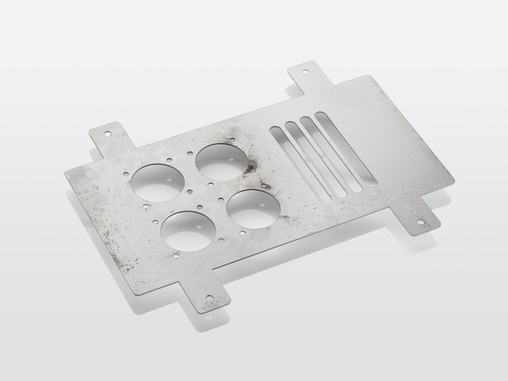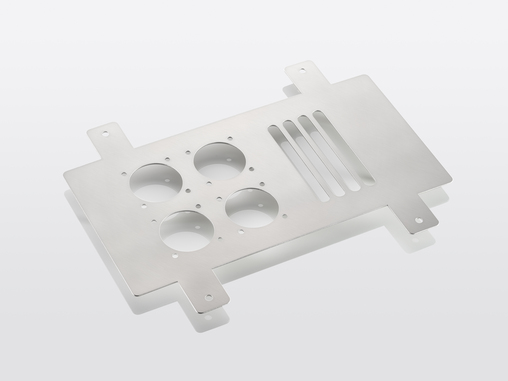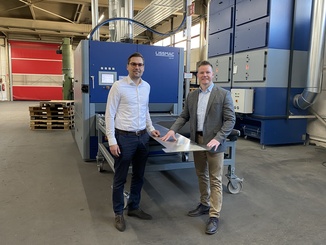
The SBM-L grinding and deburring machines from Lissmac operate using the dry process. In alternating operation, steel, stainless steel and aluminum can be machined. The systems deburr and round the edges on the outer and inner contours of punched as well as laser-, fine plasma- or waterjet-cut workpieces with a width of up to 2,000 mm and a thickness of 0.5 mm up to 50 mm on both sides in just one operation. In addition, foiled sheets can be processed.
Two grinding units, one on the top and one on the bottom, remove splashes and burrs. A total of four sanding belts, two on the top and two on the bottom, process the sheets simultaneously on both sides. Here, all edges are defused or rounded, depending on the setting of the tools. According to Lissmac, double-sided machining saves time-consuming turning of the often very heavy workpieces as well as machining twice, thus ensuring high productivity. Depending on the customer’s requirements, the system can be individually configured with appropriate tools.
All machining units are separately switchable and adjustable. At the push of a button, all units move to change position and then back to machining position, so that a quick tool change is possible. Since the workpiece is always machined at right angles to the feed direction, optimum tool utilization is also ensured over the entire working width. The feed rate is infinitely variable.


© Lissmac
Convenient operation through intuitive user interface
The SBM-L units are controlled via a touch panel. All machining information is clearly displayed; the operator language can be selected. In the process, Lissmac says the machine also scores with an intuitive user interface, a high level of operating safety thanks to three password-protected user levels, and an integrated program memory with a capacity of 10,000 data records. A USB port enables data exchange and the connection of external components such as a barcode scanner.
The Siemens S7 control system used also enables the connection of automation solutions, for example robot loading and unloading, or the integration of the machine into existing production lines. All axes automatically adjust to the preselected material thickness during the machining process. The deactivated aggregates are in standby position. Customers can also expand the scope of the plant’s services by adding a number of options. These are automatic wear compensation for the grinding modules, electronic material thickness measurement, a barcode scanner, RFID user recognition or machine and operating data acquisition.
All Lissmac grinding and deburring machines are prepared for remote maintenance and can be interlinked through the conveyor and control technology used.
Ultimately, the system is also characterized by an improved working environment without flying sparks, dust, dirt or noise, as well as user-friendly ergonomics.
Within three decades, Lissmac Maschinenbau GmbH from Bad Wurzach in the Allgäu region of Germany has developed from a pure construction machinery manufacturer to an international system partner for highly technical machinery and equipment. Today, the company comprises four business units: Construction Technology, Metal Processing, MT Handling and Plant Engineering. More than 370 employees work at seven locations in Germany, France, the USA, China, the United Arab Emirates and Russia. Customers come from the construction, metal and automotive industries.
Lissmac offers a comprehensive range of products and services worldwide. From series-produced individual machines to individually manufactured special systems, the company convinces with system solutions from a single source. The products are characterized by high-quality workmanship, great robustness, compact design, ergonomics and user-friendliness.
Web:
www.lissmac.com



